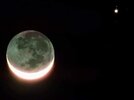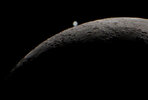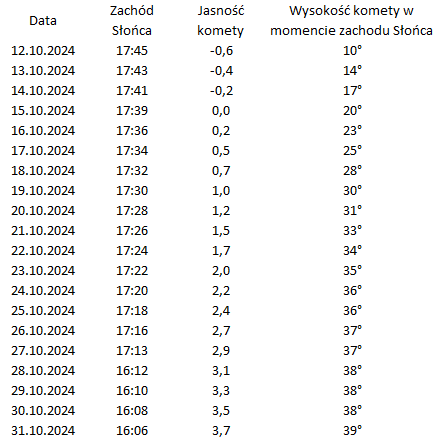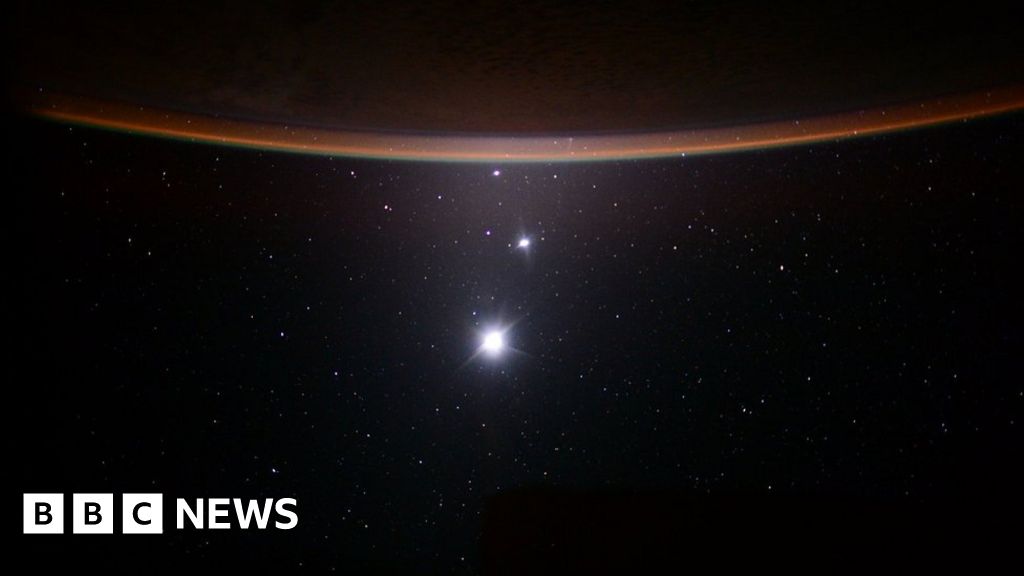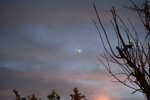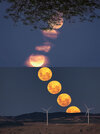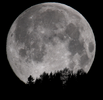I think there is a need for a thread where celestial phenomena are reported or discussed. The Cs have told us in the past
Half an hour ago I went out to the backyard and I could appreciate the Moon-Jupiter-Moon conjunction (19:35 pm local time). I searched the Internet and there are several people who have uploaded their photos to social networks:
SUNSET SKY SHOW: Around the world, people are watching Venus, Jupiter, and the crescent Moon line up in the sunset sky. Jan Jackson took this picture last night in Ziheautanejo, Mexico:

"The planets were so bright, we could photograph them with nothing more than a cell phone," says Jackson.
There's something different to see every night. Tonight, the Moon moves up and passes close to Jupiter (Pro tip: Be alert for Earthshine.) Tomorrow, there will be a nearly-vertical Moon-Jupiter-Venus line in the sky. Sky maps: Feb. 21, 22, 23.
Best of all, Venus and Jupiter are converging. At closest approach on March 1st, Venus and Jupiter will be just 0.5 degrees apart--a beautiful pairing and one of the best astrophoto-ops of 2023
From Norman Park GA USA
#Moon with #Jupiter and #venus at lower left from Montevideo #Uruguay
From El Salvador
Very excited to have been able to capture the exact moment when Jupiter hides behind the Moon. From Uruguay
A: We told you that there would be strange cosmic phenomena!
Q: (Pierre) They didn't say what was coming in.
(L) I guess we have to wait and see.
(Joe) It was the Kraken. Godzilla!
A: Paying close attention helped you spot this. Wait for more and observe results and effects.
(L) Alright... Now let's go back to our intro. You said there were lots of interesting things in the last five months, and there's more to come. Last time, you said there are going to be weather issues.
A: Soon astronomical phenomena.
Half an hour ago I went out to the backyard and I could appreciate the Moon-Jupiter-Moon conjunction (19:35 pm local time). I searched the Internet and there are several people who have uploaded their photos to social networks:
SUNSET SKY SHOW: Around the world, people are watching Venus, Jupiter, and the crescent Moon line up in the sunset sky. Jan Jackson took this picture last night in Ziheautanejo, Mexico:

"The planets were so bright, we could photograph them with nothing more than a cell phone," says Jackson.
There's something different to see every night. Tonight, the Moon moves up and passes close to Jupiter (Pro tip: Be alert for Earthshine.) Tomorrow, there will be a nearly-vertical Moon-Jupiter-Venus line in the sky. Sky maps: Feb. 21, 22, 23.
Best of all, Venus and Jupiter are converging. At closest approach on March 1st, Venus and Jupiter will be just 0.5 degrees apart--a beautiful pairing and one of the best astrophoto-ops of 2023
From Norman Park GA USA
#Moon with #Jupiter and #venus at lower left from Montevideo #Uruguay
From El Salvador
Very excited to have been able to capture the exact moment when Jupiter hides behind the Moon. From Uruguay

